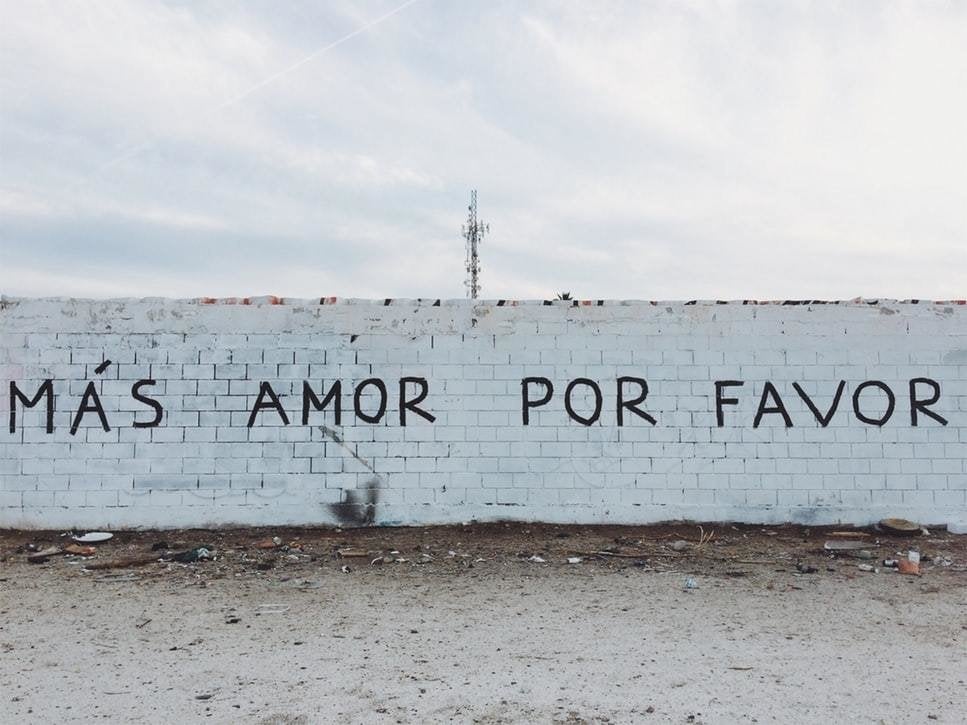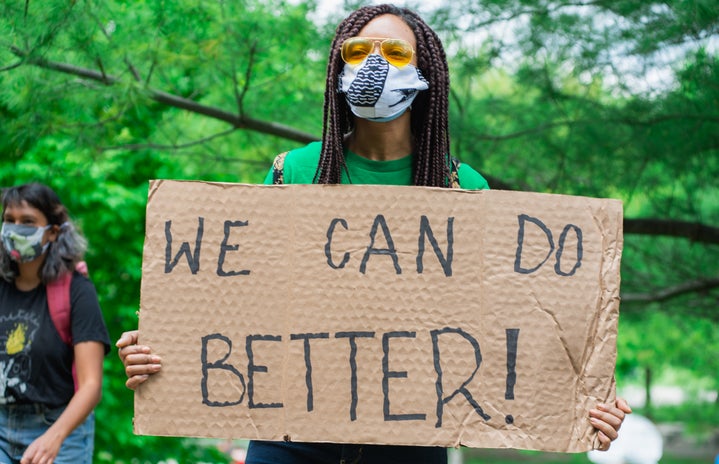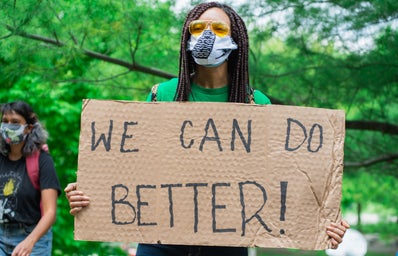Historia de chicanx en cu boulder
La frontera tiene mucho significado para mí. Soy Chicana, nací y crecí en Denver, Colorado. Mi madre, mi abuela, mi bisabuela y mi tatarabuela también son Chicanas, nacidas en Denver, Kansas y Texas. Mis abuelos, todos ellos, son de México. Esta frontera sur, rediseñada en 1848 forzando una nueva cultura en mi tatara-tatara-tatara abuela, creó tanta confusión para el resto de nosotros. Digo esto porque mi propia dulce abuela, en la década de 1960, le decía su madre: “¡No eres Chicana, eres Mexicano-Estadounidense!” Así de fácil era mantener la cabeza agachada y mantenerse en línea.
El movimiento Chicanx, en su fundación durante la era de los derechos civiles e increíblemente inspirado por activistas negros, especialmente las Panteras Negras, se trata sobre personas de ascendencia Mexicana en los Estados Unidos que no solo exigieron derechos y respeto del gobierno y la sociedad estadounidense porque son humanos y merecemos vivir bien, pero enfatizó el hecho de que más que eso, merecemos representación y repercusiones por el robo de nuestra dignidad e identidad durante décadas. Identificarse como Chicanx significa reconocer el hecho de que nuestro árbol genealógico ha sido colonizado dos veces, y exigir justicia no solo para nosotros y las generaciones futuras, sino en el honor de la sangre indígena que corre a través de nosotros, porque ser Chicanx significa nunca olvidar que la sensación de ser arrastrado en dos direcciones, y nunca ser apreciado adecuadamente por una, comenzó en 1848, con el derramamiento de sangre.
Colorado es fundamental para el movimiento Chicanx, lo que hace que mi interés en la historia Chicanx en la Universidad de Colorado Boulder sea bastante fuerte. Con recursos mínimos, debido a la cobertura mínima de la cultura Chicanx en CU, la historia es la siguiente:
CU Boulder se fundó como una escuela predominantemente blanca para la clase media alta de Colorado. Durante los movimientos de derechos civiles, de 1960 a 1970, CU Boulder fue un lugar cada vez más hostil, ya que los pocos estudiantes de color en la universidad enfrentaron discriminación y acoso inexplorados por parte de sus compañeros. La discriminación también vino directamente de la institución, cuando comenzaron a retirar rápidamente el financiamiento de su Programa de Oportunidades Educativas, un programa destinado a reclutar y retener a diversos estudiantes. En ese momento no había estudios de Chicanx, ni tampoco departamentos de estudios de latinx. En 1968, nueve estudiantes Mexicano-estadounidenses crearon la organización de Estudiantes Unidos México-Estados Unidos (UMAS) en el campus de Boulder, y jóvenes activistas Chicanx comenzaron a organizarse, exigiendo mejor de la Universidad, como mínimo. A medida que estos estudiantes Chicanx comenzaron a hacerse más ruidosos y a ganar más apoyo, la Universidad suspendió su ayuda financiera, como un tipo de consecuencia, una forma de silenciar sus voces. Afortunadamente, los Mexicanos son naturalmente resistentes y decididos; UMAS ocupó pacíficamente el edificio administrativo hasta que se restableció su ayuda financiera, una historia con la que estoy seguro que ninguno de los alumnos blancos de esta época puede relacionarse. Como el resto del país, empeora. En 1974, cuando la situación de los estudiantes Chicanx no progresaba en CU Boulder, lo que llevó a una ocupación de 18 días en el Edificio Temporal 1 en el campus. Durante estos 18 días, en días separados, no uno, sino dos coches con bomba explotaron con tres Chicanos en cada vehículo. Las bombas se escucharon y sintieron desde millas de distancia, y nadie fue atrapado ni pagó las consecuencias, simplemente porque nunca se investigó. Estos seis Chicanos: Reyes Martinez (26), Una Jaakola (24), Neva Romero (21), Francisco Dougherty (20), Heriberto Terán (24), y Florencio Granado (31) – eran activistas, estudiantes, ex alumnos, miembros de la comunidad y, lo más importante, tenían familias y amigos que nunca recibieron una pizca de justicia. Y eso es todo amigos, nada más que esa tragedia se puede encontrar sobre la historia de Chicanx en CU Boulder, y el monumento creado por la comunidad hecho en 2019 para Los Seis de Boulder apenas fue, a fines de 2020, votado por la Junta de CU para ser un estatua permanente en el campus, como si no fuera ya una parte permanente de su historia.
Hoy, UMAS y MEXA siguen siendo una organización activa en el campus, centrando las voces, el aprendizaje y el crecimiento de los estudiantes Chicanx. El departamento de Estudios Étnicos de CU también se está volviendo cada vez más educativo y honesto sobre nuestras historias, de forma lenta pero segura. Sin embargo, la población de CU sigue siendo solo 12% hispana / latina, mientras que 66% es blanca; una brecha étnica como esta simplemente proviene del uso de las barreras establecidas sistémicamente para diversos estudiantes (pobreza, estatus de indocumentados, falta de recursos , etc.), contra ellos. No es que CU no vaya a admitirlos, mírame por ejemplo, más bien, es el hecho de que cuando los estudiantes calificados no pueden pagar la matrícula ridículamente alta debido a otras razones sociales incontrolables, CU no está creando mucho espacio para ayudar y elevar.
Como parte de ese 12% aquí en CU Boulder, como alguien que cree en el progreso y la empatía, y como Chicana, sé que podríamos hacerlo mejor. Mejor financiamiento para los departamentos de estudios de historia y ética, mejor asistencia financiera para todos los estudiantes, especialmente para aquellos que lo necesiten. Podríamos hacerlo mejor teniendo conversaciones difíciles, contando estas trágicas historias a lo largo y ancho, recordando el trabajo que se ha realizado y luego honrándolo todo con la acción para ser mejores. Como escuela que se considera liberal, yo diría que tenemos que ser “Boulder” sobre la igualdad de oportunidades y la justicia en el campus.

Chicanx history at cu boulder
The border holds so much significance to me. I am Chicana, born and raised in Denver, Colorado. My mom, grandma, great-grandma and great-great grandma are Chicanas too – born in Denver, Kansas, and Texas. My grandfathers – all of them – are from Mexico. This southern border, redrawn in 1848 forcing a new culture on my great-great-great grandmother, created so much confusion for the rest of us. I say this because my own sweet grandma, in the 1960s, would be told by her mother, “You are not Chicana, you are Mexican-American!” It was that easy to keep your head down and stay in line.
The Chicanx movement, at its foundation during the civil rights era and incredibly inspired by Black activists, especially the Black Panthers, is about people of Mexican descent in the United States who not only demanded rights and respect from the government and American society because they are human and deserve to live well – but emphasized the fact that more than that, we deserve representation and repercussions for our dignity and identity being stolen for decades. Identifying as Chicanx means to acknowledge the fact that our family tree has been colonized twice – and to demand justice not just for ourselves and future generations, but in the honor of the indigenous blood that runs through us, because to be Chicanx, means to never forget that the feeling of being pulled in two directions, and never being adequately appreciated for one, began in 1848, with the bloodshed.
Colorado is central to the Chicanx movement, making my interest in Chicanx history at the University of Colorado Boulder quite strong. With minimal resources, due to minimal coverage of Chicanx culture at CU, the story goes like this:
CU Boulder was founded as a predominately white school for the upper-middle class of Colorado. During the civil rights movements in the 1960s-1970s, CU Boulder was a growing hostile place, as the very few students of color at the university faced uncharted discrimination and harassment from their peers. Discrimination came directly from the institution as well, when they began to rapidly defund their Education Opportunity Program, a program meant to recruit and retain diverse students. At this time there were no Chicanx studies, or any latinx studies, departments either. In 1968, nine Mexican-American students created the United Mexican-American Students organization (UMAS) on the Boulder campus, and young Chicanx activists began organizing, and demanding better from the University at the very least. As these Chicanx students began getting louder and gaining more support, the University suspended their financial aid – as a type of consequence, a way of silencing their voices. Luckily, Mexicans are naturally resilient and determined; UMAS peacefully occupied the administrative building until their financial aid was reinstated – a story that I am sure none of the white alumni from this time can relate to. Like the rest of the country, it gets worse. In 1974, the situation for Chicanx students was not progressing at CU Boulder, leading to an 18-day occupation in Temporary Building 1 on campus. During these 18 days, on separate days, not one, but two car bombs exploded with three Chicanos in each vehicle. The bombs were heard and felt from miles away, and no one ever got caught or paid consequences – simply because it was never even investigated. These six Chicanos: Reyes Martinez (26), Una Jaakola (24), Neva Romero (21), Francisco Dougherty (20), Heriberto Terán (24), and Florencio Granado (31) – were activists, students, alumni, community members, and most importantly, they had families and friends who never received an ounce of justice. And that’s all folks, nothing more than that tragedy can be found about Chicanx history at CU Boulder, and the community-created memorial made in 2019 for Los Seis de Boulder was barely, as of late 2020, voted by the CU Board to be a permanent statue on campus, as if it’s not already a permanent part of its history.
Today, UMAS y MEXA is still an active organization on campus, centering the voices, learning, and growth of Chicanx students. The Ethnic Studies department at CU is also becoming increasingly educational and honest about our histories, slowly but surely. Unfortunately, however, the CU population is still only 12% Hispanic/Latino, while being 66% white. An ethnic gap like this simply comes from using the barriers systemically set in place for diverse students (poverty, undocumented statuses, a lack of resources, etc), against them. It’s not that CU won’t admit us, look at me for example, rather, it’s the fact that when qualified students cannot pay the ridiculously high tuition because of other uncontrollable societal reasons, CU isn’t creating much space to help and uplift.
As part of that 12% here at CU Boulder, as someone who believes in progress and empathy, and as a Chicana, I know that we could do better. Better funding to history and ethnic studies departments, better financial assistance for all students, especially students who need it. We could do better by having hard conversations, telling these tragic stories far and wide, remembering the work that has been done, then honoring it all with action to be better. As a school that deems itself as liberal, I’d say we need to be “Boulder” about equitable opportunity and justice on campus.


